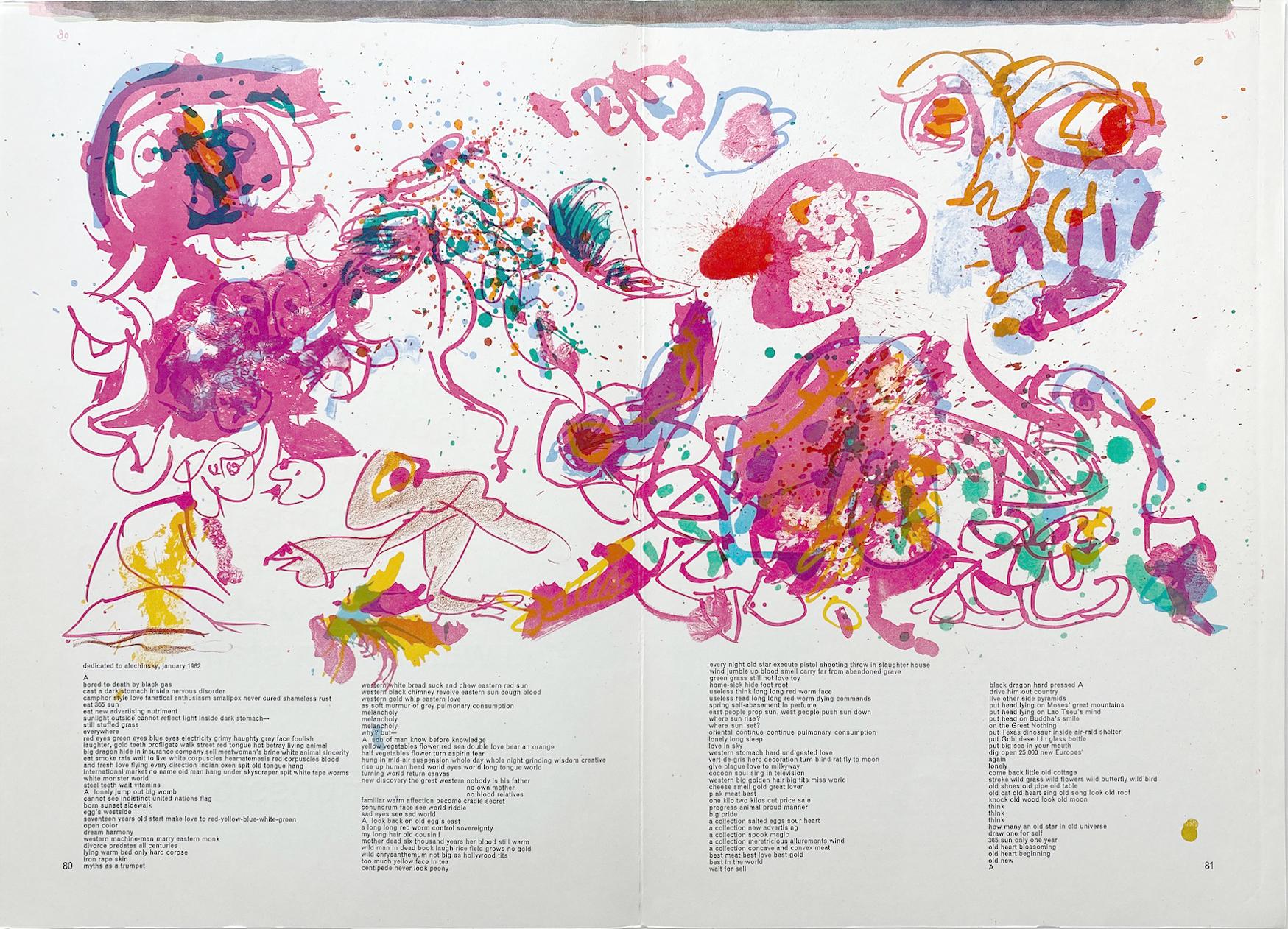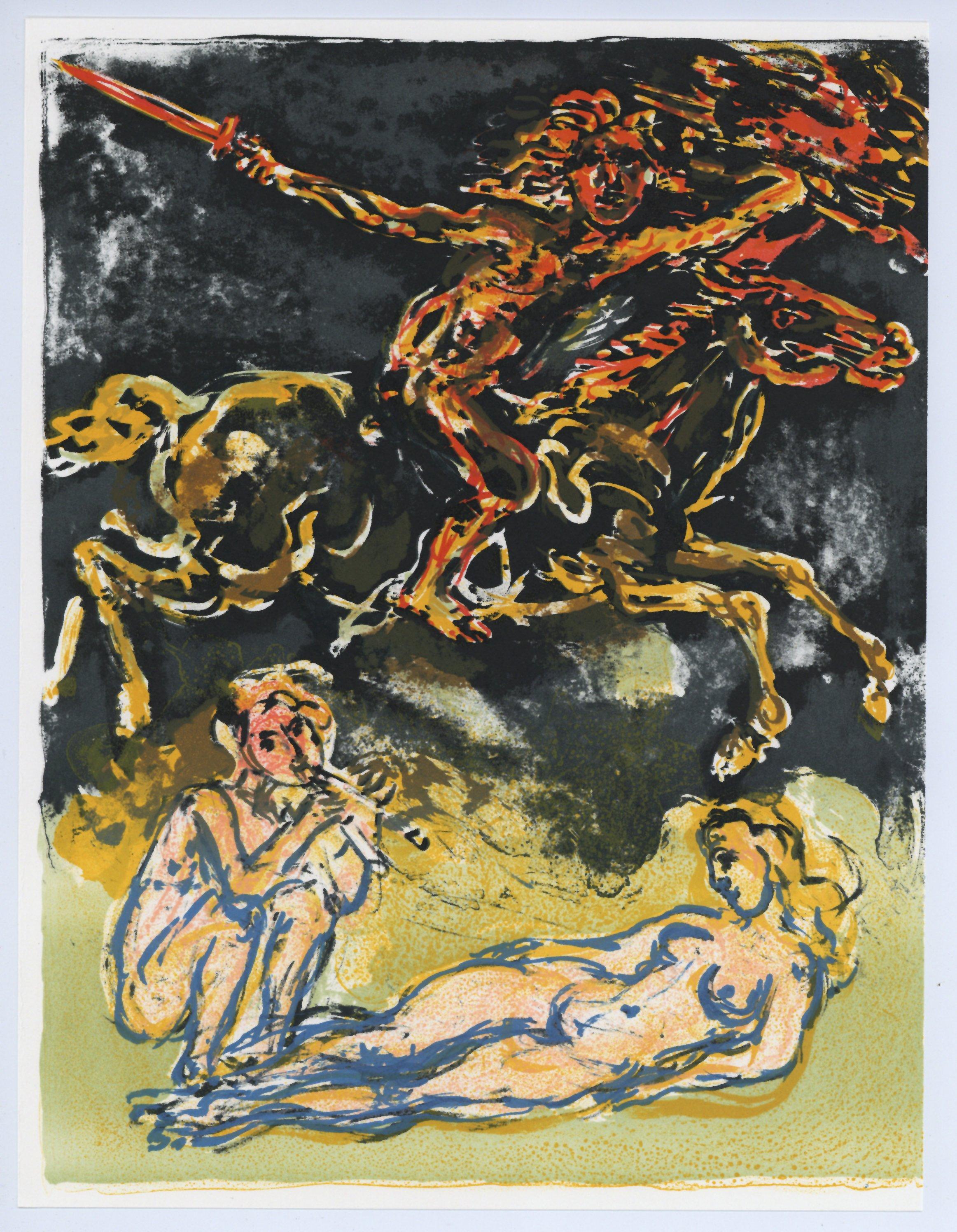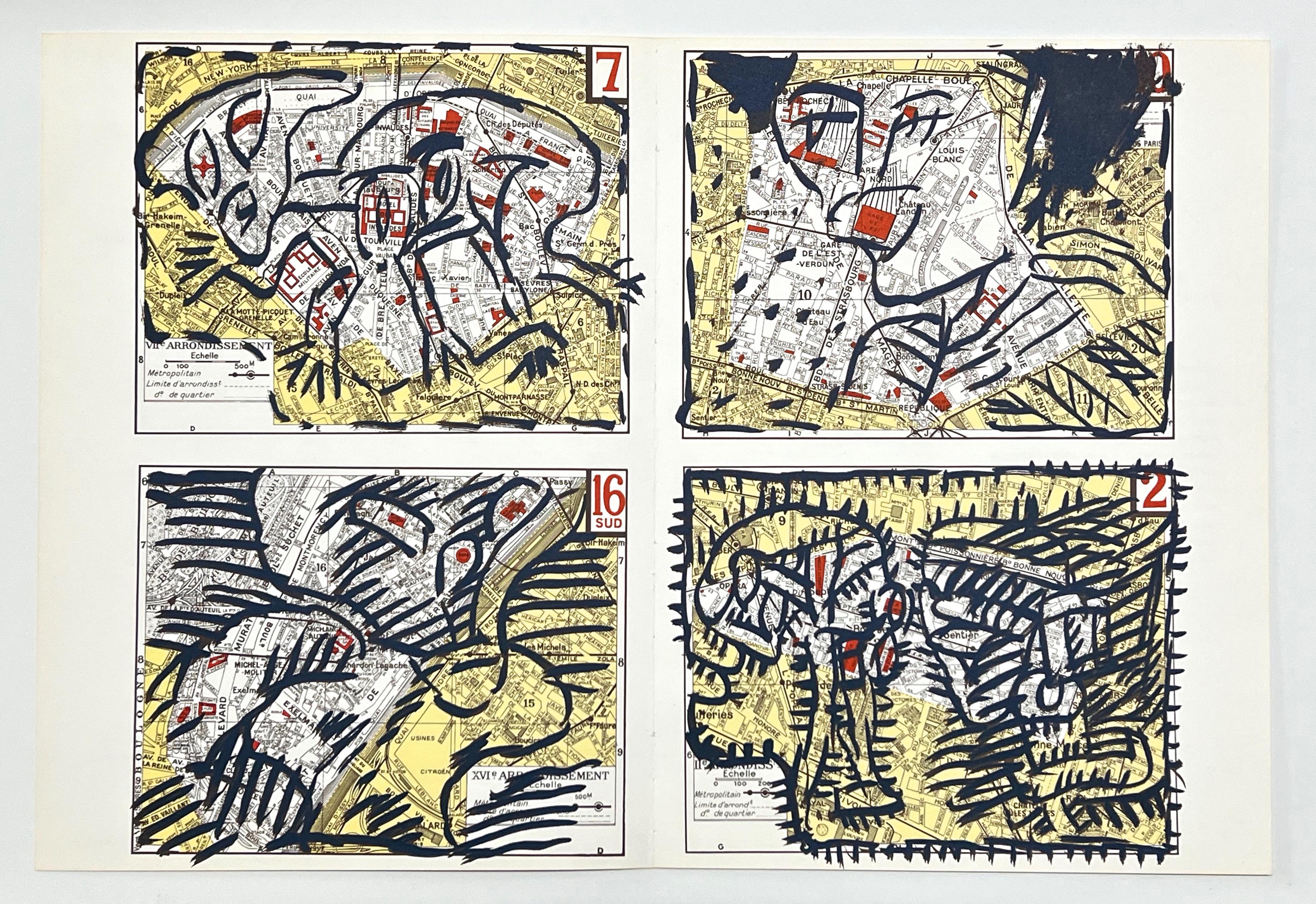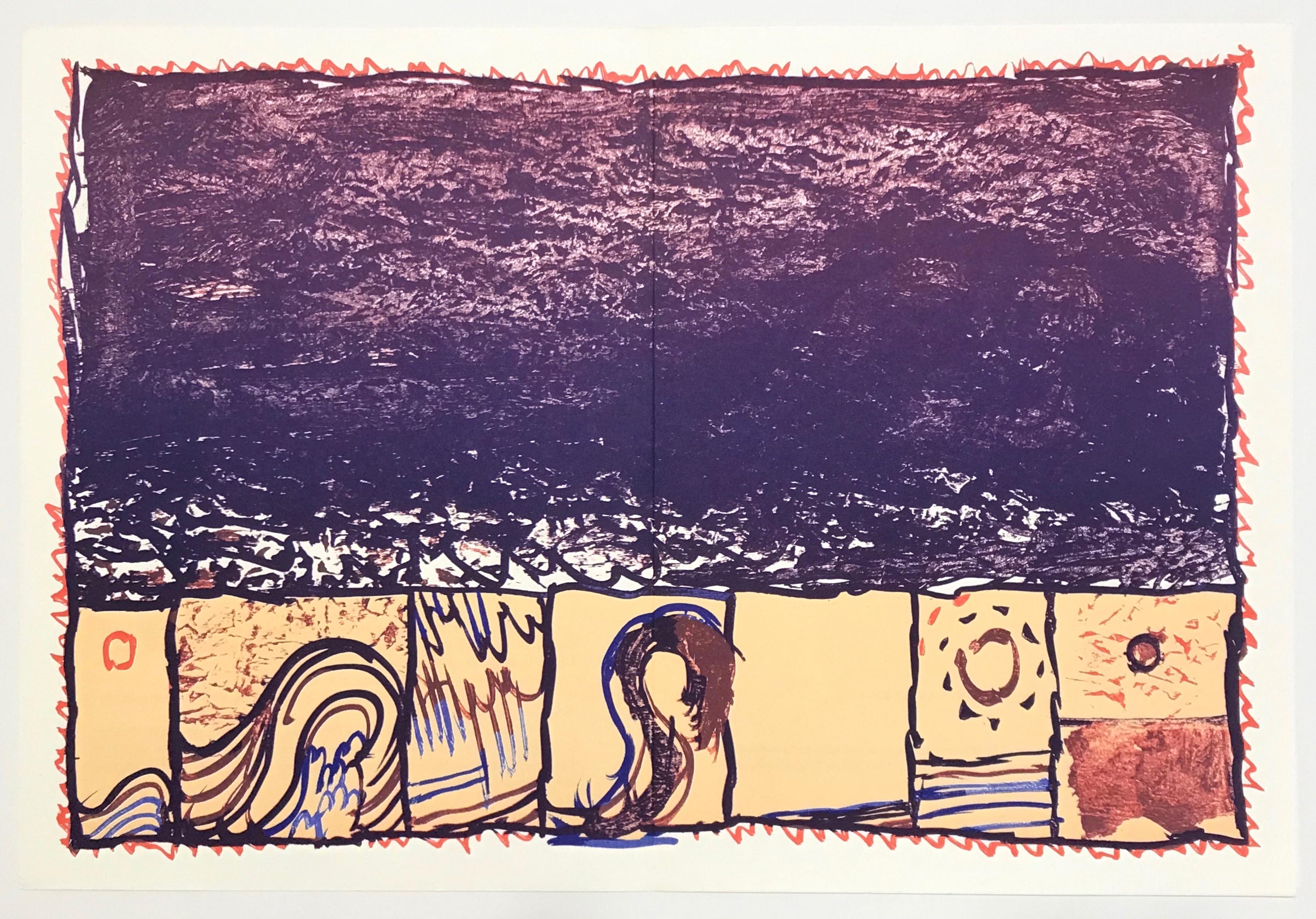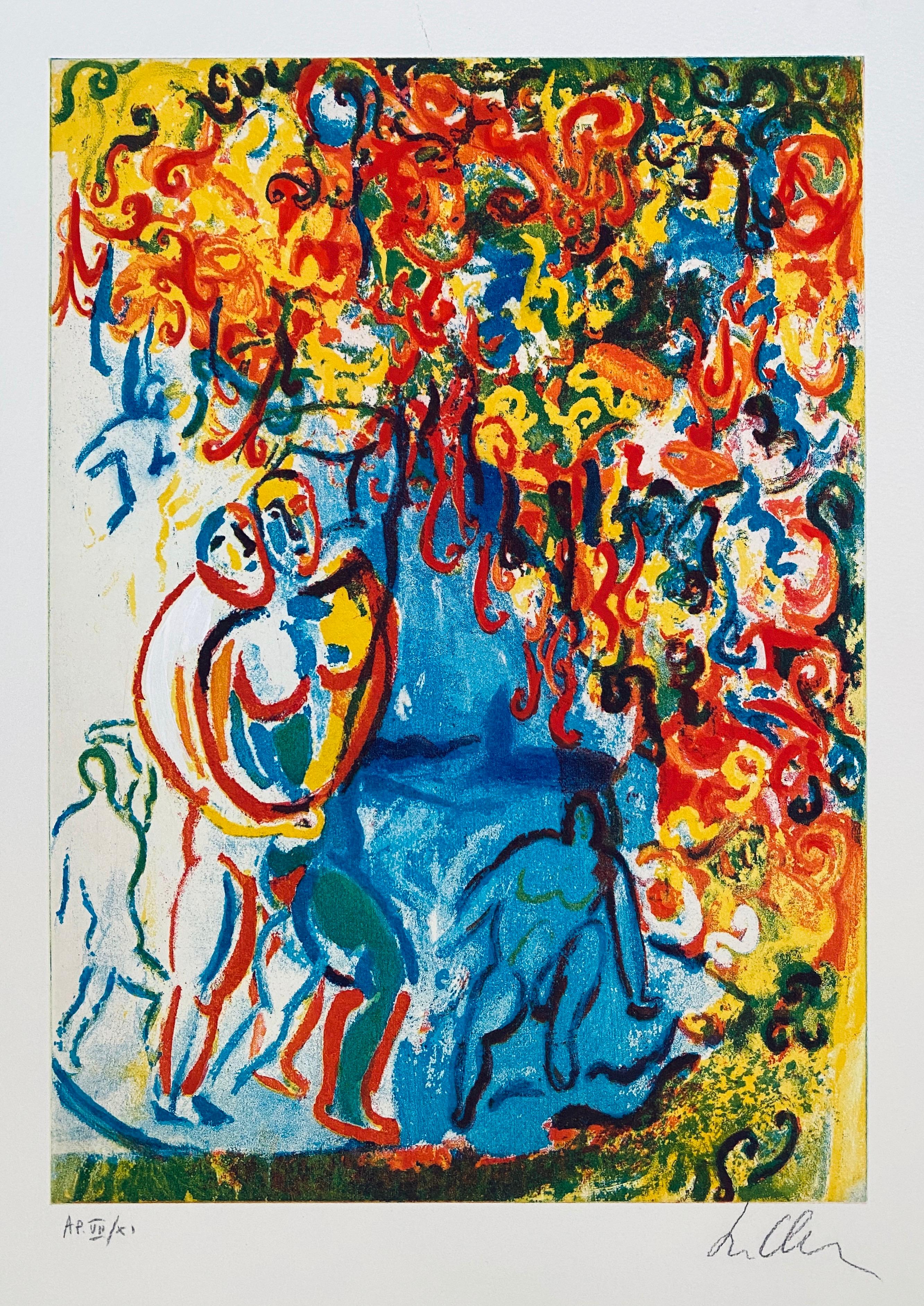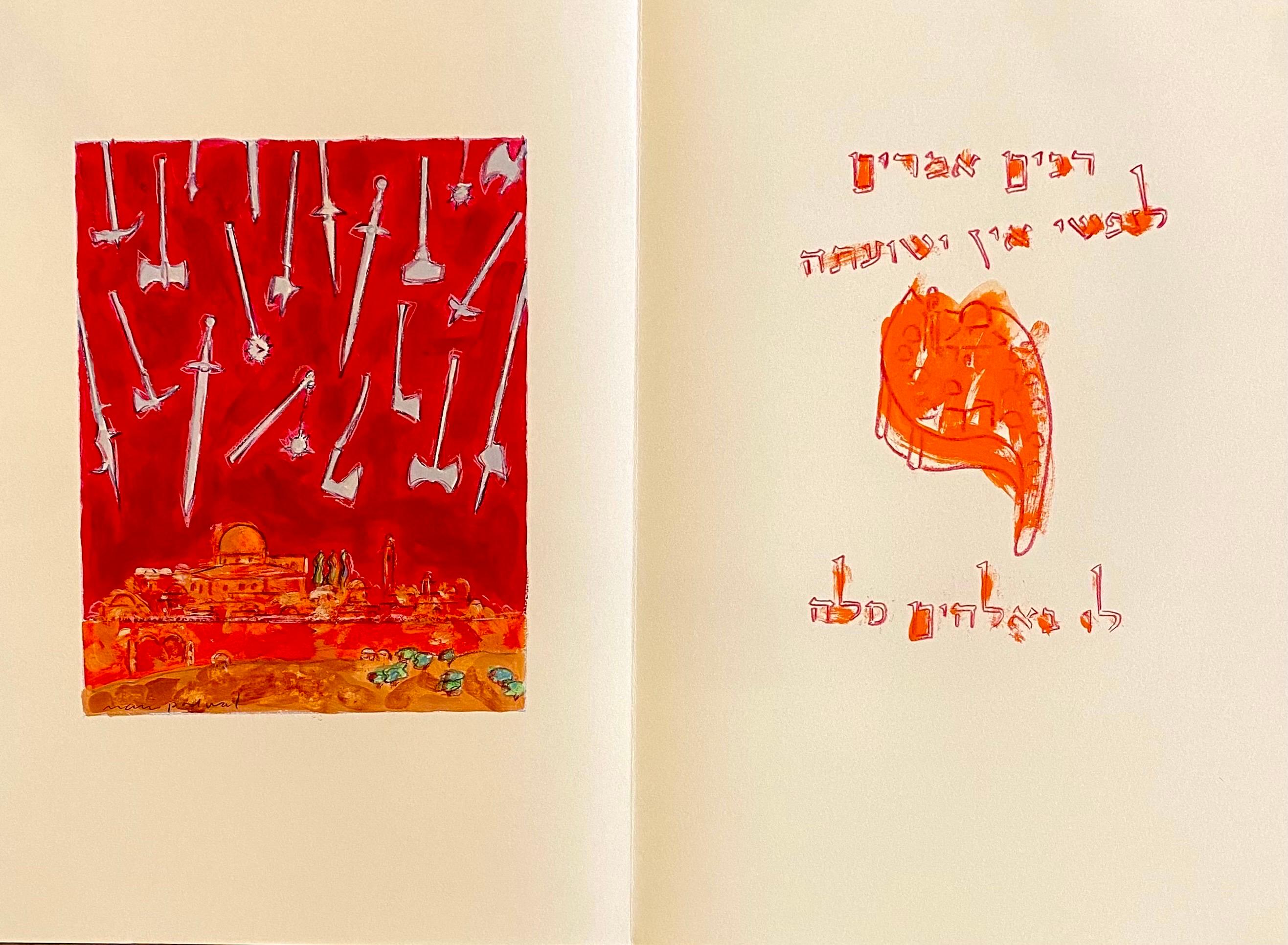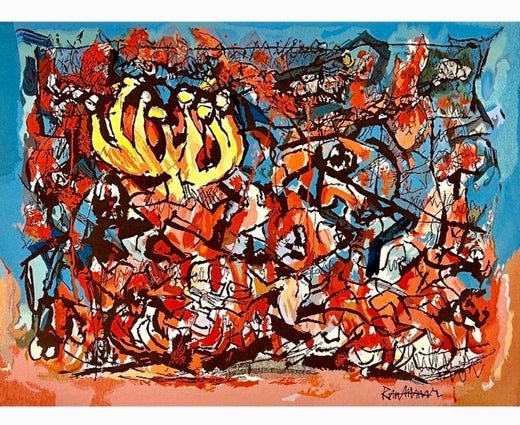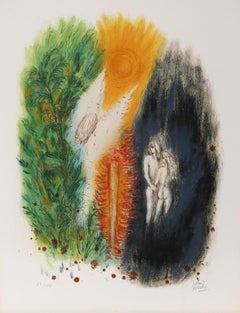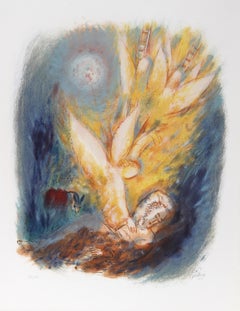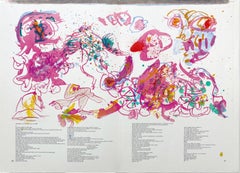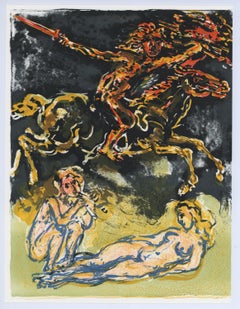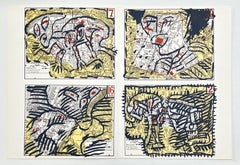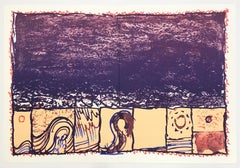Abraham RattnerIn the Beginning, Portfolio of 12 Lithographs1972
1972
About the Item
- Creator:Abraham Rattner (1895-1978, American)
- Creation Year:1972
- Dimensions:Height: 25.5 in (64.77 cm)Width: 20 in (50.8 cm)
- Medium:
- Movement & Style:
- Period:
- Condition:
- Gallery Location:Long Island City, NY
- Reference Number:1stDibs: LU4662407583
Abraham Rattner
Abraham Rattner lived in Paris from 1920–40, knew and studied the works of Claude Monet. He is known for his surrealist pieces that more closely follow the works of Picasso and George Rouault. His artwork is in the Albright-Knox Art Gallery, Buffalo, New York; Art Institute of Chicago; Baltimore Museum of Art; Detroit Institute of Arts; Montgomery Museum of Fine Arts, Montgomery, Alabama; Pennsylvania Academy of the Fine Arts, Philadelphia Museum of Art; Phillips Collection, Washington, D.C.; Wadsworth Atheneum, Hartford, Connecticut; Whitney Museum of American Art, New York City; Samuel P. Harn Museum of Art, Gainesville, Florida and the Leepa-Rattner Museum of Art on the campus of St. Petersburg College in Tarpon Springs, Florida.
- ShippingRetrieving quote...Shipping from: Long Island City, NY
- Return Policy
More From This Seller
View All1980s Abstract Abstract Prints
Lithograph
1970s Modern Figurative Prints
Lithograph
1970s Modern Figurative Prints
Lithograph
1970s Modern Figurative Prints
Lithograph
1970s Modern Figurative Prints
Lithograph
1960s Modern Abstract Prints
Lithograph
You May Also Like
1960s Expressionist Portrait Prints
Lithograph
1960s Prints and Multiples
Lithograph
1980s Prints and Multiples
Lithograph
1980s Prints and Multiples
Lithograph
Late 20th Century Pop Art Figurative Prints
Lithograph
21st Century and Contemporary Neo-Expressionist Figurative Prints
Lithograph, Archival Pigment
Read More
Romare Bearden’s Humanity Infuses His Bright, Bold Art
Through collage, painting and printmaking, the artist foregrounded Black life in America in revolutionary new ways.
Chryssa’s 1962 Neon Sculpture Was Way ahead of the Art-World Curve
By working with lettering, neon and Pop imagery, Chryssa pioneered several postmodern themes at a time when most male artists detested commercial mediums.
